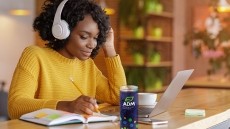Cadbury to remove artificial colors by end of 2008
from its confectionery products by the end of the year in response
to concerns over their possible effects on behavior.
Speaking to FoodNavigator-USA sister site ConfectioneryNews.com, Tony Bilsborough, Cadbury spokesperson, said: "Cadbury can confirm that we have listened to consumers and are committed to replacing all artificial colors in our sweets by the end of this year. "We note the Southampton study findings, although we had already begun a programme to replace artificial colors in our biggest brands, such as Bassett's Liquorice Allsorts and Jelly Babies - all other sweet brands will now also switch before the end of 2008." This major step by one of the leading confectionery companies could spur others into action as pressure mounts on manufacturers to reformulate their products to ensure consumer safety. Artificial colorings have received much media attention recently, particularly in Europe following the publication of the UK Southampton Study last year, which linked certain food colorings to hyperactivity in children. The additives debate intensified last week when the UK Food Standards Agency (FSA) decided to push for push for a national voluntary removal of the additives through extensive reformulation, while advising the European Food Safety Authority (EFSA) to implement a ban. Pressure on the confectionery sector The six colors linked to hyperactivity by the Southampton study were tartrazine (E102), quinoline yellow (E104), sunset yellow (E110), carmoisine (E122), ponceau 4R (E124) and allura red (E129). While the FSA's conclusions will not result in an immediate ban, they do increase the pressure placed on the entire food industry to consider reformulation.The Food Commission, which campaigns for healthier, safer food, listed on its website more than 1,000 products available in the UK that still contain the six colors. The majority of these products are from the confectionery sector, whose products are primarily aimed at children, therefore resulting in particular scrutiny of confectionery companies While many manufacturers, like Cadbury, began reformulating when concerns were first raised over artificial colorings, more confectionery companies may now follow suit and remove all colorings following the FSA's decision regarding the Southampton study last week. Cadbury is not the first confectioner to take such definite actions following consumer concerns on additives. Nestle Rowntree already promised to remove all artificial colorings from its confectionery in the summer of 2005. At that time, the company reported a 9 per cent increase on sales of Rowntree products, indicating the strategy's popularity amongst consumers. Industry response to FSA decision The FSA's conclusions of the importance of the Southampton study received a mixed bag of responses from the industry in Europe. A spokesperson for the UK Food and Drink Federation expressed concerns over the possible reformulation hurdles facing some manufacturers. She said: "FDF's confectionery members, along with all our other members, have been very proactive in reformulating their products where possible and have either already succeeded in removing the colors mentioned in the Southampton study or committed to reducing them over the next year. "There are a small number of food and drink products that are struggling to find alternatives to these colors, which may result in them having to be withdrawn." Meanwhile, others welcomed the decision. Anna Glayzer, campaign coordinator for the Food Commission, said: "We are delighted that the FSA has put its duty to the consumer first in their decision to recommend an EU ban. We will be keeping a close eye on industry to see what the effect of the voluntary ban has." The Southampton research team also welcomes the decision. Lead study member, Professor Jim Stevenson, said: "The change of regulation recommended by the FSA to remove these six colors will be welcomed by parents, especially those wanting to avoid exposing their children to artificial colors and who were trying to achieve this by monitoring the constituents of the food bought for the family." Also last week, 42 organizations across Europe united to call for the Commission to suspend the use of the six colorings linked to hyperactivity in the Southampton study.












